The 1963 Nickel is a fairly easy coin to obtain. You can fish them out of bank-issued coin rolls, and they are fairly cheap in the open market. They also have valuable varieties and interesting error coins. But what are they worth?
According to our research, Circulated 1963 Nickels are worth between 10 and 20 cents depending on their condition. In mint state, a 1963 Nickel can fetch between $0.25 and $15,000 depending on its condition.
As for the 1963-P Proof Nickels, they are valued between $10 and $700.
That’s a lot of information to take in. But just to summarise, below is a comparison of value among these coins.
1963 Nickel Valuation Chart
| Coin Condition | Estimated Value | ||
| 1963-P Nickel | 1963-D Nickel | 1963-P Proof Nickel | |
| Circulated
(G4 – XF40) |
$0.10 | $0.10 | – |
| About Uncirculated (AU50 – AU58+) | $0.10 – $0.20 | $0.10 – $0.20 | – |
| Uncirculated
(MS60 – MS64+) |
$0.25 – $70 | $0.25 – $2,800 | $10 – $22.50 |
| Brilliant Uncirculated (MS65 or higher) | $15 – $4,500 | $45 – $15,000 | $15 – $700 |
1963 Nickel: Historical Background
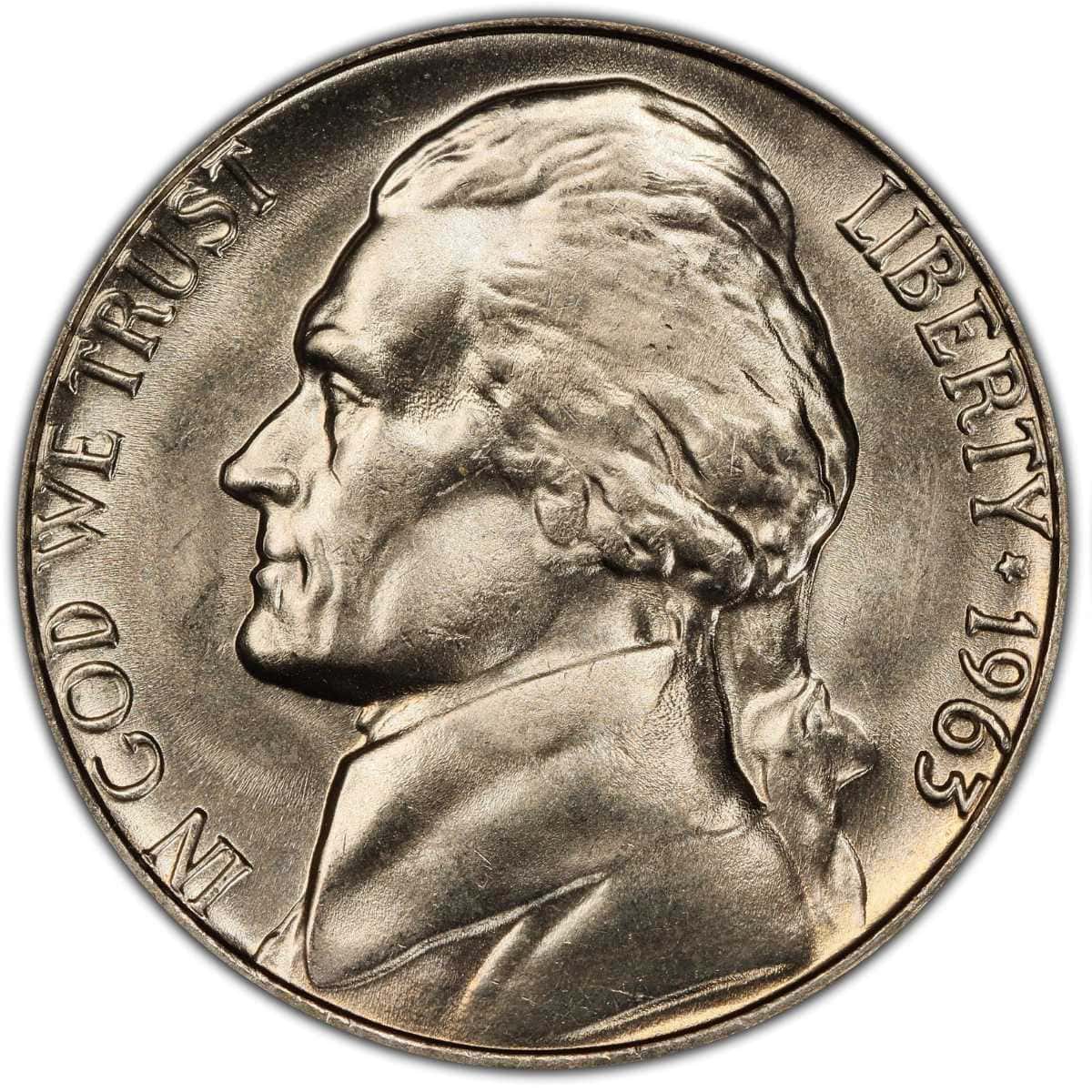
The 1963 Nickel is the 26th iteration of the Jefferson Nickel, a coin series in production since 1938. And if you know your Jefferson Nickels, you’ll know it features a certain set of steps that the U.S. Mint had problems depicting.
I’m talking about the steps of Monticello, Thomas Jefferson’s mansion. Most of the nickels struck in Philadelphia and Denver were poorly executed and showed fuzzy steps. Only a few well-struck nickels emerged in 1963 and continued the legacy of the Full Steps variety.
Full Steps 1963 Nickels are rare and more desirable than regular-struck nickels. At the Philadelphia Mint, some well-struck examples showed six steps, while others only showed five steps.
The Denver Mint wasn’t exactly leading in matters of quality in 1963. The use of worn dies and poor strikes plagued the production of Jefferson Nickels. Their best strikes only showed five steps, and they are rare and more valuable than their Philly equivalents.
So whenever you come across a 1963 Jefferson Nickel, flip to the reverse and examine the steps on Monticello; it could be the difference between earning a few bucks and grabbing thousands of dollars.
1963 Nickel: Physical Features
Many people may not be aware of this, but Nickels get their name from nickel, one of the metals that make them. While nickel gives the Jefferson Nickel its characteristic silver color, it is not the dominant metal. Nickel only contributes 25% of the metal that makes the 1963 Jefferson Nickel; the other 75% is made of copper.
1963 Nickel: Physical Characteristics
| Physical Feature | Notes |
| Color | Silver |
| Metallic Composition | 75% Copper
25% Nickel |
| Weight | 5.0 grams |
| Diameter | 21.2 mm |
| Edge | Plain |
1963 Nickel Obverse Design and Features

While the edge of the 1963 Nickel is plain, its faces aren’t. For the obverse of the 1963 Nickel, the U.S. Mint went with a 1938 design that Felix Schlag imagined.
This design includes the following articles on the obverse:
- The left-facing profile of Thomas Jefferson
- The legend “IN GOD WE TRUST.”
- The legend “LIBERTY“
- The date “1963“
- A solitary star
1963 Nickel Reverse Design and Features

The reverse of the 1963 Jefferson Nickel was also designed by Felix Schlag, and it included the following elements:
- A front-view depiction of the Monticello mansion
- The inscription “MONTICELLO.”
- The legend “E PLURIBUS UNUM”
- The denomination “FIVE CENTS“
- The country “UNITED STATES OF AMERICA“
- The mint mark “D” or none
1963 Nickel: Varieties and Value
Due to its shutdown in 1955, the San Francisco Mint was notably absent from the production of the 1963 Nickel. But this absence doesn’t mean that the 1963 Nickel lacked awesome varieties. Below is a breakdown of the common varieties of the 1963 Nickel as well as their value.
1963-P Nickel Value

- U.S. Mint: Philadelphia
- Mintage: 175,784,000
- Mint Mark: None
Despite striking over 175 million nickels, the Philadelphia Mint only managed the second-highest mintage in 1963. While they failed in the quantity race, the Philly Mint’s quality was also lacking, a recurring theme among the 1963 Nickels.
A majority of the nickels struck in Philadelphia couldn’t fill their dies after workers increased the die distance. What emerged was a ton of coins showing fuzzy steps. Since these coins make the majority, we call them regular-struck nickels.
Examples showing full steps (Five or Six Steps) are in the minority, thus rare and more desirable.
Regular-struck 1963-P Nickels are available in all conditions imaginable. And their value increases with a coin’s increasing condition.
Circulated Regular-Struck 1963-P Nickels are worth 10 cents regardless of their condition. About Circulated examples are estimated to be worth between 10 and 20 cents, depending on their condition. Mint State Regular-Struck 1963-P Nickels are worth between $0.25 and $500.
The more desirable 1963-P Nickels with full steps are almost always in mint condition, and they ask for a premium. 1963-P Nickels showing Six Steps are valued between $65 and $185, according to NGC. Those showing Five Steps have values that range from $40 to $4,500, depending on their condition.
If we were to tabulate the value of these coins at these conditions, we would end up with the table below:
| Coin Condition | Estimated Value | ||
| Regular Strike | Showing 6 Steps | Showing 5 Steps | |
| Good (G4) | $0.10 | – | – |
| Very Good (VG8) | $0.10 | – | – |
| Fine (F12) | $0.10 | – | – |
| Very Fine (VF20) | $0.10 | – | – |
| Extremely Fine (XF40) | $0.10 | – | – |
| About Uncirculated (AU50) | $0.10 | – | – |
| About Uncirculated (AU58) | $0.15 | – | – |
| Uncirculated (MS60) | $0.25 | – | – |
| Brilliant Uncirculated (MS64) | $7.50 | $65 | $40 |
| Brilliant Uncirculated (MS65) | $15 | $165 | $100 |
| Brilliant Uncirculated (MS67) | $550 | – | $4,500 |
It’s important to understand that the figures above are only estimates set by the fair market value derived from current market transactions. The final price of a coin is dictated by its demand. Under the right circumstances, the coin can fall short of or even exceed its estimated value.
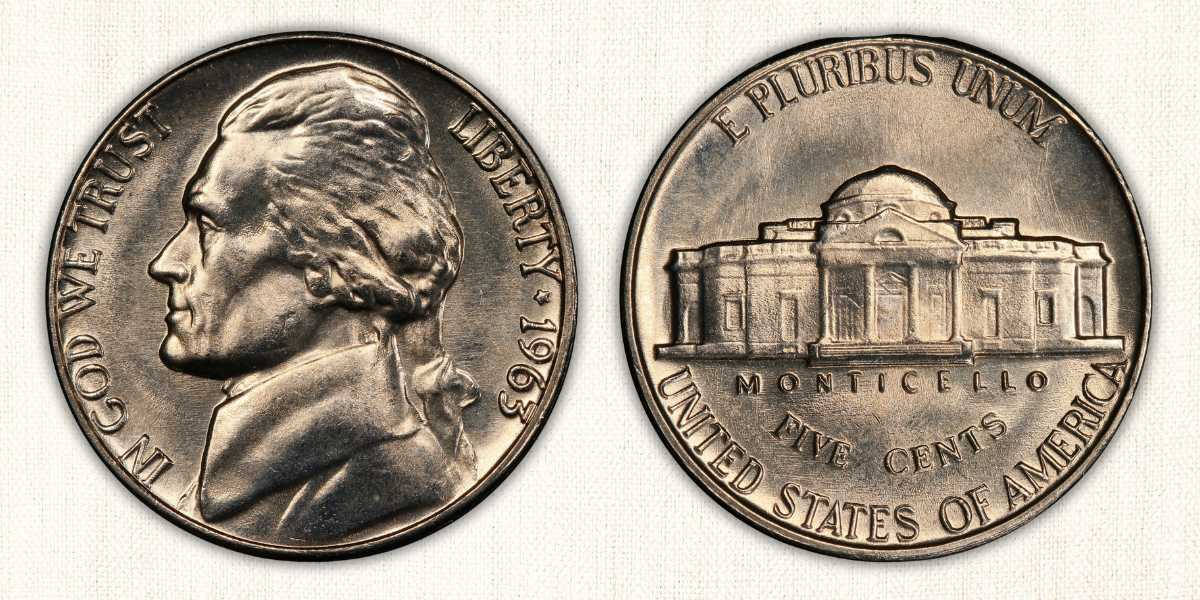
To demonstrate what 1963 Nickels actually sell for, we’ve listed some notable auctions involving the coin.
| Variety | Grade | Sales Price | Auction Firm |
| Five Steps | MS67FS | $3,600 | Heritage Auctions |
| Five Steps | MS67FS | $1,440 | Heritage Auctions |
| Five Steps | MS67FS | $1,500 | Heritage Auctions |
| Regular Strike | MS67 | $420 | Heritage Auctions |
1963-P Nickel with Triple Die Reverse (TDR), Value
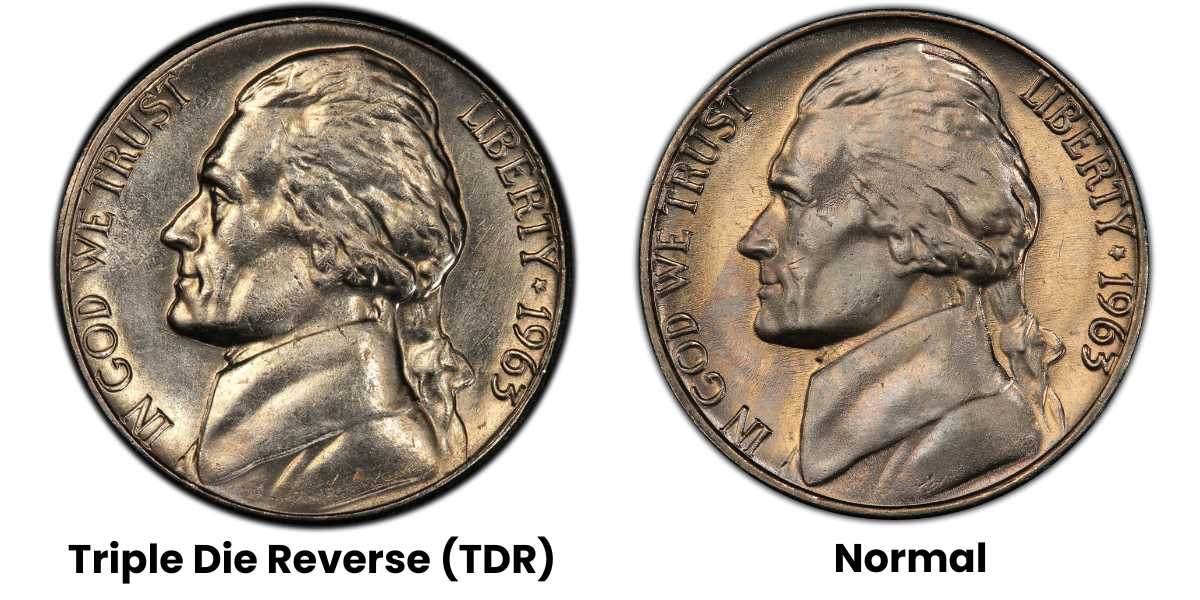
- U.S. Mint: Philadelphia
- Mintage: Unknown
- Mint Mark: None
As you’re already aware, quality was not a priority at the Philadelphia Mint. Out of the 176 million nickels struck at the facility, an unknown number emerged with a Triple Die Reverse error.
This is an anomaly that results from a not-so-sturdy hub. What we end up with is a coin with tripling around the edges of the portraits, letters, and numbering.
For the TDR 1963-P Nickel, tripling is visible along the edges of the legends and inscriptions of the reverse. In some coins, the obverse is also affected, with Jefferson’s collar showing a triple edge.
TDR 1963-P Nickels are rarer than regular 1963-P Nickels. And because of its rarity, it is more valuable.
Most of these coins will be in mint condition. Per PCGS estimates, TDR 1963-P Nickels are worth between $30 and $300. Below is a highlight of how much PCGS values coins of this variety:
| Coin Condition | Estimated Value |
| Uncirculated (MS60) | $30 |
| Uncirculated (MS61) | $35 |
| Uncirculated (MS62) | $50 |
| Uncirculated (MS63) | $100 |
| Uncirculated (MS64) | $165 |
| Uncirculated (MS65) | $300 |
| Uncirculated (MS66) | – |
Again, the values in the table above are only estimates. In the open market, these nickels can sell above or below their estimated value depending on their demand (which fluctuates often).
We could only find one 1963-P Nickel with a Triple Die Reverse, and this coin was sold for $227.20. With a grade of MS64, the coin maintains most of its original luster and lacks any form of spotting.
1963-P Proof Nickel Value
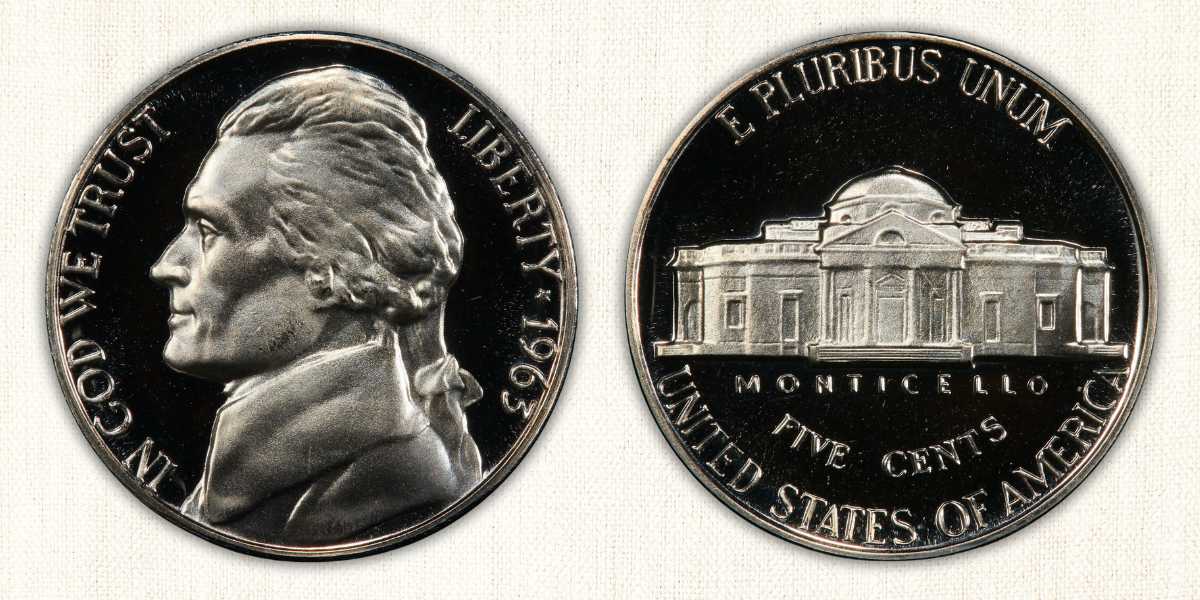
- U.S. Mint: Philadelphia
- Mintage: 3,075,645
- Mint Mark: None
The Philadelphia Mint was busy in 1963. It also made a bunch of proof coins in Proof, Cameo, and Deep Cameo varieties. While all proof coins look good with full steps, the Deep Cameo variety has superior eye appeal and evidently holds the most value.
Deep Cameo 1963-P Proof Nickels have values ranging between $20 and $700, depending on their condition. Their Cameo equivalents are valued between $15 and $100, while the basic Proof 1963-P Nickel is worth between $10 and $500.
Below is a comparison of the value of these coins.
| Coin Condition | Estimated Value | ||
| Proof | Cameo | Deep Cameo | |
| Uncirculated (PR60) | – | – | – |
| Uncirculated (PR61) | – | – | – |
| Uncirculated (PR62) | – | – | – |
| Uncirculated (PR63) | – | – | – |
| Uncirculated (PR64) | $10 | $15 | $20 |
| Uncirculated (PR65) | $15 | $20 | $25 |
| Uncirculated (PR66) | $20 | $25 | $30 |
| Uncirculated (PR67) | $25 | $30 | $45 |
| Uncirculated (PR68) | $30 | $40 | $65 |
| Uncirculated (PR69) | $65 | $100 | $700 |
| Uncirculated (PR70) | $500 | – | – |
Under the right circumstances, the 1963-P Proof Nickel will sell for thousands of dollars. And to prove it, here are five notable auctions involving 1963-P Proof Nickels
| Variety | Grade | Sales Price | Auction Firm |
| Deep Cameo | PR69DCAM | $1,560 | Heritage Auctions |
| Deep Cameo | PR69DCAM | $1,093 | Heritage Auctions |
| Deep Cameo | PR69DCAM | $1,020 | Heritage Auctions |
| Deep Cameo | PR69DCAM | $900 | Stack’s Bowers |
1963-D Nickel Value
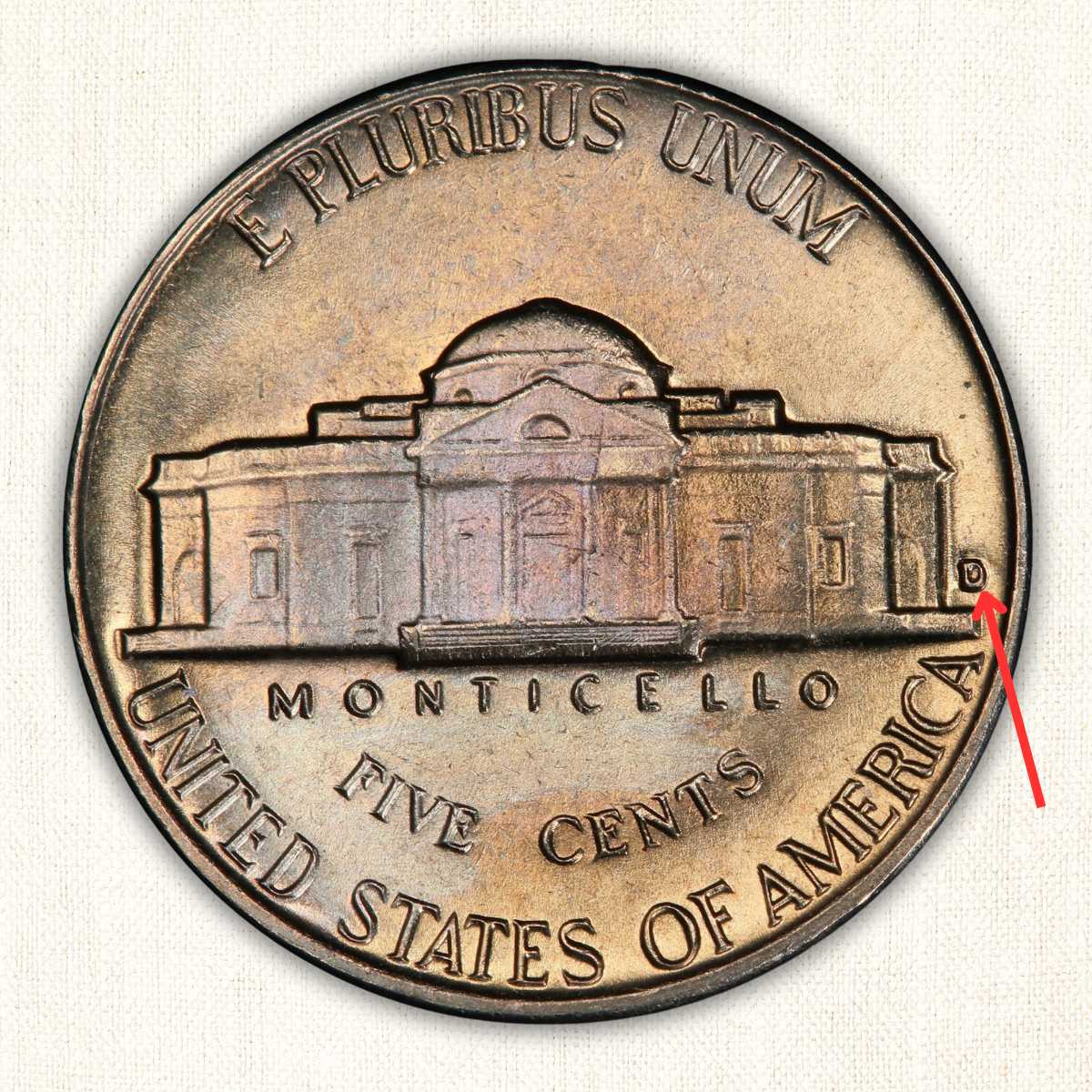
- U.S. Mint: Denver
- Mintage: 276,829,460
- Mint Mark: D
The Denver Mint had the highest mintage in 1963. However, this high production came at the cost of quality, with most of its coins showing fuzzy steps. Even the well-struck coins only showed five steps (not the six steps seen in some Philadelphia coins).
But there’s a silver lining to this lack of quality, as 1963-D Nickels showing five steps are the most valuable variety among the 1963 Nickels, these gems between $450 and $15,000.
As for the regular strikes, those are worth 10 cents in circulated condition, and between 10 and 15 cents in About Circulated condition. In mint state, regular-struck 1963-D Nickels can fetch between $0.25 and a cool $1,000.
Below is a table that compares the value of these varieties of the 1963-D Nickel:
| Coin Condition | Estimated Value | |
| Regular Strike | Showing 5 Steps | |
| Good (G4) | $0.10 | – |
| Very Good (VG8) | $0.10 | – |
| Fine (F12) | $0.10 | – |
| Very Fine (VF20) | $0.10 | – |
| Extremely Fine (XF40) | $0.10 | – |
| About Uncirculated (AU50) | $0.10 | – |
| About Uncirculated (AU58) | $0.15 | – |
| Uncirculated (MS60) | $0.25 | – |
| Brilliant Uncirculated (MS63) | $1 | $450 |
| Brilliant Uncirculated (MS65) | $45 | $7,000 |
| Brilliant Uncirculated (MS66) | $135 | $15,000 |
| Brilliant Uncirculated (MS67) | $1,000 | – |
It’s a hit-and-miss affair for the 1963-D Nickel in the open market. Some coins fail to meet their estimated value, while others blow past their estimates. Below are notable auctions involving 1963-D Nickels.
| Variety | Grade | Sales Price | Auction Firm |
| Full Steps | MS65FS | $9,200 | Heritage Auctions |
| Full Steps | MS65+FS | $6,168.75 | Legend RC |
| Full Steps | MS65FS | $5,760 | Stack’s Bowers |
| Full Steps | MS65FS | $5,640 | Heritage Auctions |
1963 Nickel: Valuable Error Coin List
Now that you’re well-acquainted with the varieties of the 1963 Nickel, we can tackle its error coins. Below are valuable five error coins in the 1963 Nickel family:
1963-P Nickel Struck on a Penny Planchet: Selling for $625
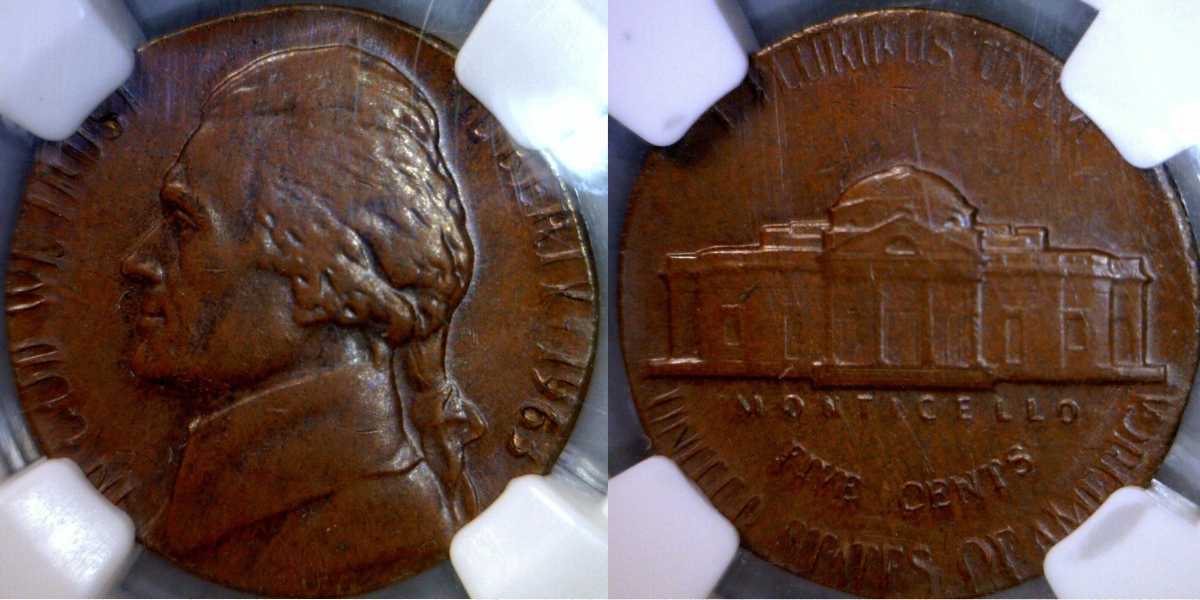
If you’ve ever wondered what happens when a nickel is struck on a penny planchet, this coin might just answer your question. Since a penny planchet is slightly smaller than its nickel equivalent, most of the peripheral details are cut off. The coin also takes on the bronze appearance of the penny.
1963-D Nickel Struck on a Penny Planchet: Sold for $317.17
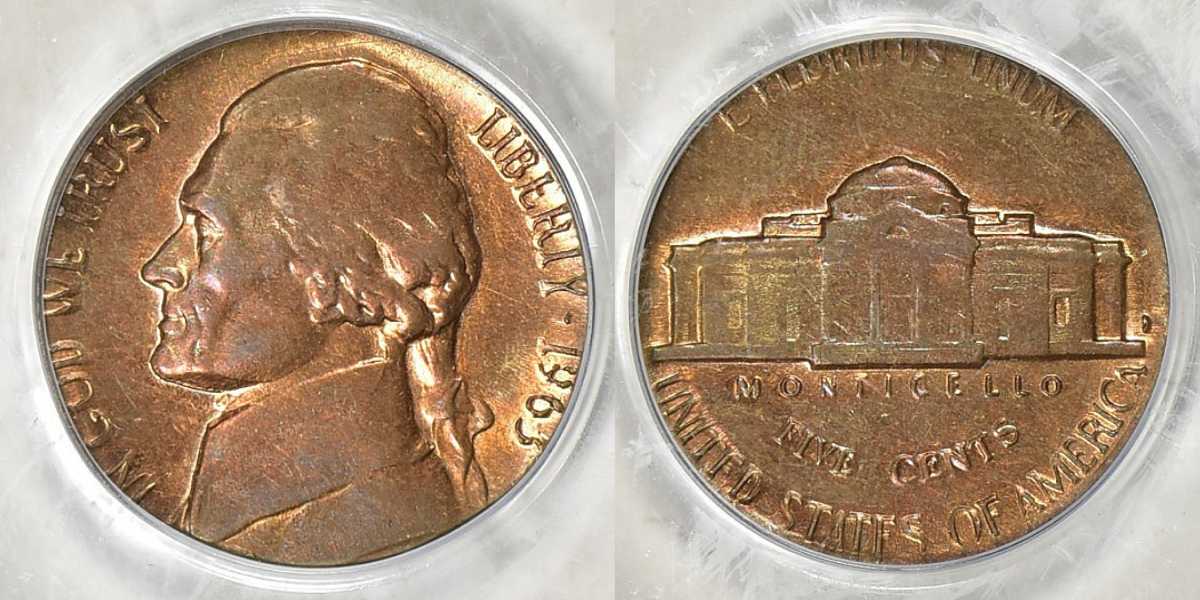
Tossing penny planchets among their nickel equivalents was not limited to the Philadelphia Mint. Its Denver sister mint also got in the fun and produced this gem. PGS graded this coin MS63RB, and it shows.
1963-D Jefferson Nickel with Die Error: Selling for $20
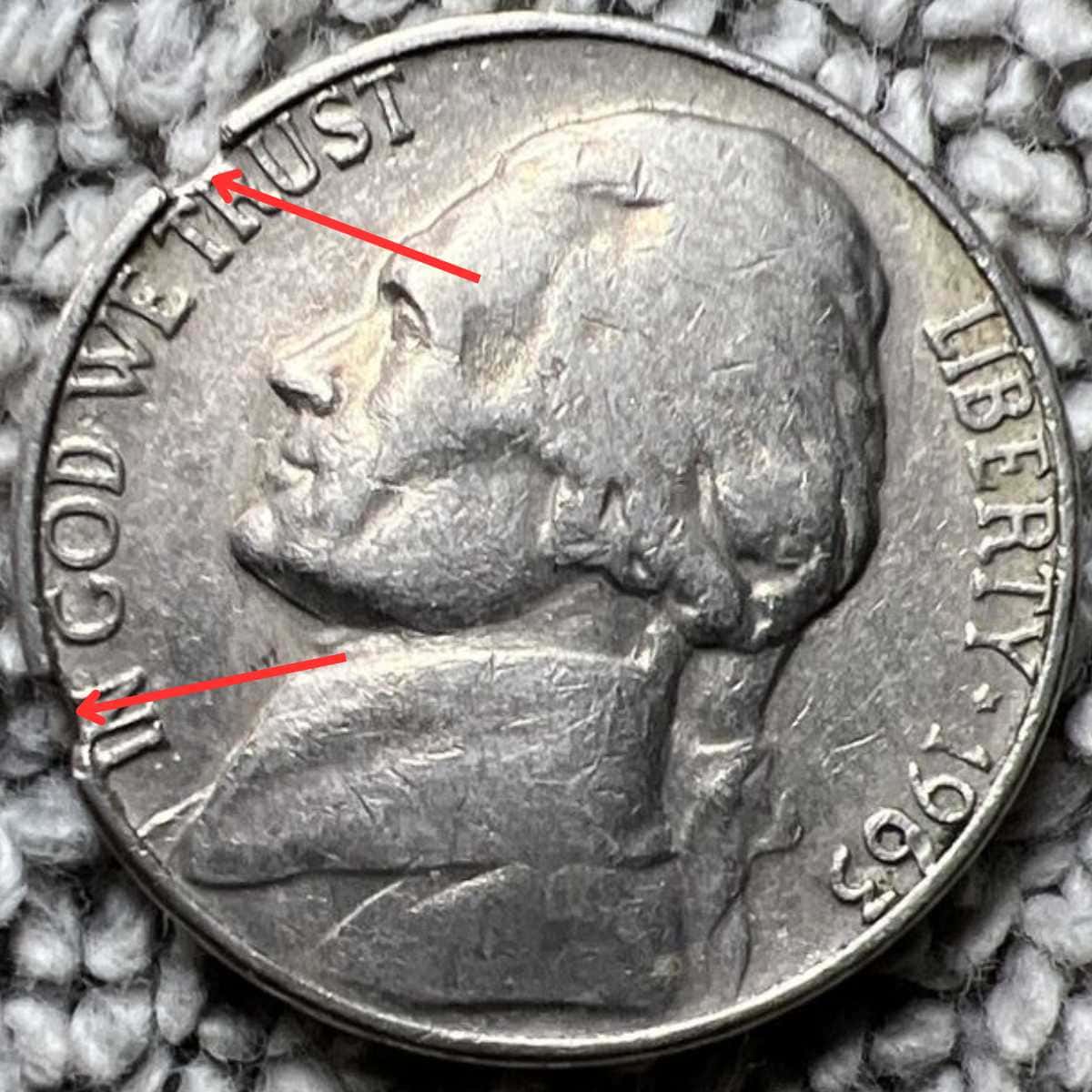
Our next coin has two clips along its rim. From the obverse, the clips appear on the seven and 10 O’clock positions. The seller claims that the marks result from a die error. But without official grading, it’s hard to know whether the marks are genuine.
1963-D/D Nickel with Repunched Mint Mark (RPM): Selling for 19.99
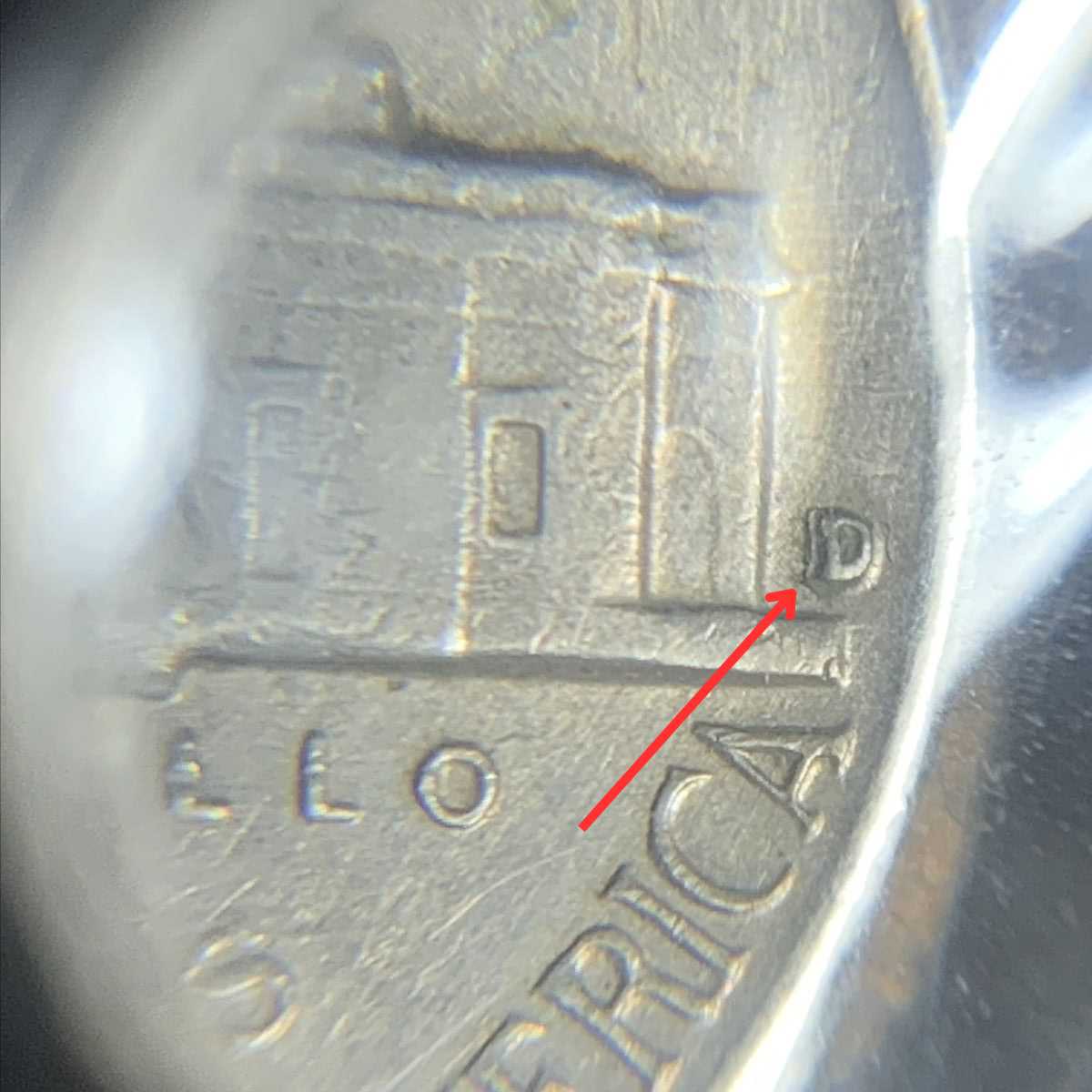
What happens when you’re not satisfied with the mint mark you just struck? Well, if you’re a worker in the Denver Mint in 1963, you punch the mint mark again. And that’s how this coin ended up with a repunched mint mark, or as we love to call it, an RPM.
1963-D/D Nickel with Repunched Mint Mark (RPM): Selling for $6.99
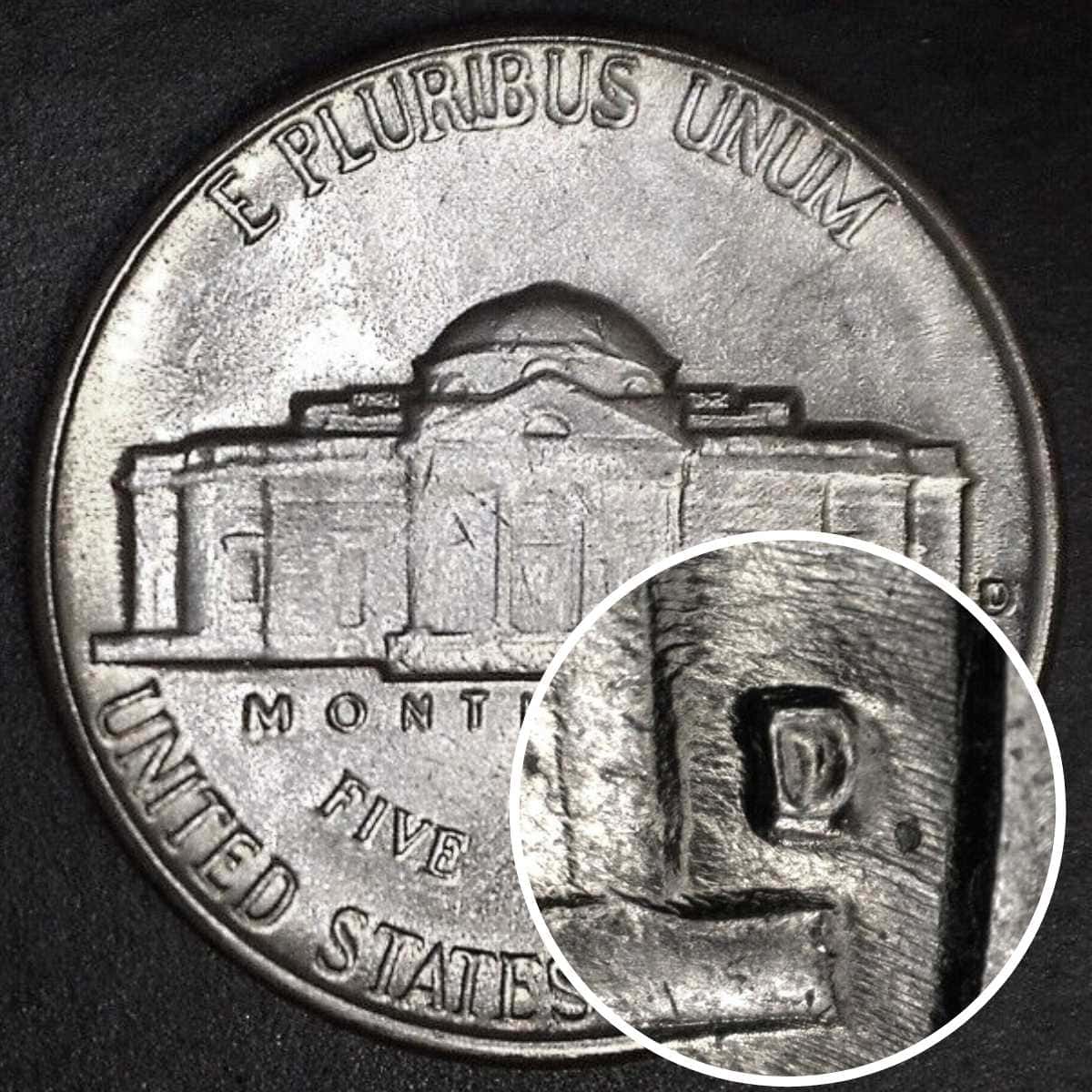
Here’s another coin with a repunched mint mark. The coin itself appears to be in mint condition, retaining most of its original luster. While the coin doesn’t show full steps on Monticello, it is only a few scratches short of perfect.
1963 Nickel: Is it Worth Collecting?
The 1963 Nickel is the kind of coin that serves almost all kinds of collectors. To the novice collector (or beginner), it is cheap and easily attainable. You can find many examples among coin rolls or even among your change.
To the intermediate collector looking for better examples, the 1963 Nickel comes cheap, with mint state examples selling for as low as 25 cents. Collectors who hunt for interesting varieties will love the Triple Die Reverse (TDR) of this Jefferson Nickel, and so will the error coin collectors.
The 1963 Nickel delivers a lot of potential to every type of collector.


Jenson is a professional numismatist, a dedicated coin collector, a graduate of the College of Business at Oregon State, a life member of the American Numismatic Association (ANA), and an overall coin nerd. He is the founder of Coin Value List.
